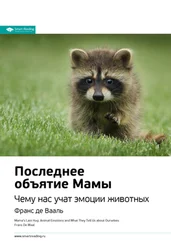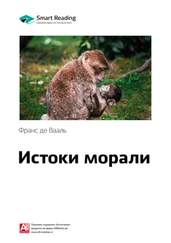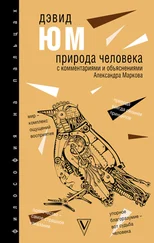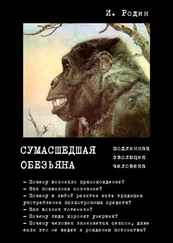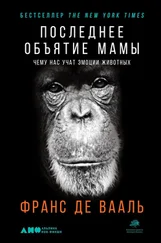Wiessner, P. (1996) “Leveling the Hunter: Constraints on the Status Quest in Foraging Societies.” In Food and the Status Quest , Wiessner, P., and Schiefenhövel, W. (Eds.), pp. 171–191. Providence, RI: Berghahn.
Woodward, R., and Bernstein, C. (1976) The Final Days . New York: Simon & Schuster.
Zinnes, D. A. (1967) “An Analytical Study of the Balance of Power Theories.” Journal of Peace Research 4: 270–288.
ГЛАВА ТРЕТЬЯ. СЕКС
Alcock, J. (2001) The Triumph of Sociobiology . Oxford: Oxford University Press.
Alexander, M. G., and Fisher, T. D. (2003) “Truth and Consequences: Using the Bogus Pipeline to Examine Sex Differences in Self-Reported Sexuality.” Journal of Sex Research 40: 27–35.
Angier, N. (1999) Woman: An Intimate Geography . New York: Houghton Mifflin.
Antilla, S. (2003) Tales from the Boom-Boom Room: Women vs. Wall Street. Princeton, NJ: Bloomberg Press.
Arribas, A. (2003) Petite Histoire du Baiser . Paris: Nicolas Philippe.
Bagemihl, B. (1999) Biological Exuberance: Animal Homosexuality and Natural Diversity. New York: St. Martin’s Press.
Beckerman, S., and Valentine, P. (2002) Cultures of Multiple Fathers: The Theory and Practice of Partible Paternity in Lowland South America . Gainesville, FL: University Press of Florida.
Bereczkei, T., Gyuris, T., and Weisfeld, G. E. (2004) “Sexual Imprinting in Human Mate Choice.” Proceedings of the Royal Society of London 271: 1129–1134.
Betzig, L. (1986) Despotism and Differential Reproduction: A Darwinian View of History . New York: Aldine de Gruyter.
Boesch, C., and Boesch, H. (1984) “Sex Differences in the Use of Natural Hammers by Wild Chimpanzees: A Preliminary Report.” Journal of Human Evolution 13: 415–585.
Bray, O. E., Kennelly, J. J., and Guarino, J. L. (1975) “Fertility of Eggs Produced on Territories of Vasectomized Red-Winged Blackbirds.” Wilson Bulletin 87: 187–195.
Brown Travis, C., Editor. (2003) Evolution, Gender, and Rape . Cambridge, MA: MIT Press.
Buss, D. M. (1989) “Sex Differences in Human Mate Preferences.” Behavioral and Brain Sciences 12: 1–49.
Cardoso, F. L., and Werner, D. (2004) “Homosexuality.” In Encyclopedia of Sex and Gender: Men and Women in the World’s Cultures , Ember, C. R., and Ember, M. (Eds.), pp. 204–215. New York: Kluwer.
Dahl, J. F. (1986) “Cyclic Perineal Swelling During the Intermenstrual Intervals of Captive Female Pygmy Chimpanzees.” Journal of Human Evolution 15: 369–385.
Dahl, J. F., Nadler, R. D., and Collins, D. C. (1991) “Monitoring the Ovarian Cycles of Pan Troglodytes and Pan Paniscus : A Comparative Approach.” American Journal of Primatology 24: 195–209.
Daly, M., and Wilson, M. (1982) “Whom Are Newborn Babies Said to Resemble?” Ethology & Sociobiology 3: 69–78.
_____. (1988) Homicide . Hawthorne, NY: Aldine de Gruyter.
de Waal, F. B. M. (1987) “Tension Regulation and Nonreproductive Functions of Sex Among Captive Bonobos.” National Geographic Research 3: 318–335.
_____. (1995) “Sex as an Alternative to Aggression in the Bonobo.” In Sexual Nature, Sexual Culture , Abramson, P., and Pinkerton, S. (Eds.), pp. 37–56. Chicago: University of Chicago Press.
_____. (1998) Commentary on C. B. Stanford. Current Anthropology 39: 407–408.
_____. (April 2, 2000) “Survival of the Rapist,” review of A Natural History of Rape by R. Thornhill and C. T. Palmer. New York Times Book Review , pp. 24–25.
_____. (2001) The Ape and the Sushi Master . New York: Basic Books.
Deer, B. (March 9, 1997) “Death of the Killer Ape.” The Sunday Times Magazine (London), March 9, 1997.
Diamond, M. (1990) “Selected Cross-Generational Sexual Behavior in Traditional Hawai’i: A Sexological Ethnography.” In Pedophilia: Biosocial Dimensions , Feierman, J. R. (Ed.), pp. 378–393. New York: Springer.
Ehrlich, P. (2000) Human Natures: Genes, Cultures, and the Human Prospect. Washington, D. C.: Island Press.
Fisher, H. (1983) The Sex Contract: The Evolution of Human Behavior . New York: Quill.
Fossey, D. (1984) “Infanticide in Mountain Gorillas with Comparative Notes on Chimpanzees.” In Infanticide , Hausfater, G., and Hrdy, S. B. (Eds.), pp. 217–235. New York: Aldine de Gruyter.
Foucault, M. (1978) The History of Sexuality. Volume 1: An Introduction . New York: Vintage.
Freese, J., and Meland, S. (2002) “Seven Tenths Incorrect: Heterogenity and Change in the Waist-to-Hip Ratios in Playboy Centerfold Models and Miss America Pageant Winners.” Journal of Sex Research 39: 133–138.
Freud, S. (1950 [1913]) Totem and Taboo: Some Points of Agreement Between the Mental Lives of Savages and Neurotics . New York: Norton. Фрейд З. Тотем и табу. – СПб.: Азбука, 2017.
Friedman, D. M. (2001) A Mind of its Own: A Cultural History of the Penis . New York: Free Press. Фридман Д. Пенис: история взлетов и падений. – М.: РИПОЛ классик, 2011.
Furuichi, T., and Hashimoto, C. (2002) “Why Female Bonobos Have a Lower Copulation Rate During Estrus Than Chimpanzees.” In Behavioural Diversity in Chimpanzees and Bonobos , Boesch, C., Hohmann, G., and Marchant, L. F. (Eds.), pp. 156–167. Cambridge: Cambridge University Press.
Furuichi T., Idani, G., Ihobe, H., Kuroda, S., Kitamura, K., Mori, A., Enomoto, T., Okayasu, N., Hashimoto, C., and Kano, T. (1998) “Population Dynamics of Wild Bonobos at Wamba.” International Journal of Primatology 19: 1029–1043.
Goldfoot, D. A., Westerborgvan Loon, H., Groeneveld, W., and Slob, A. K. (1980) “Behavioral and Physiological Evidence of Sexual Climax in the Female Stumptailed Macaque.” Science 208: 1477–1479.
Gould, S. J. (1987) “Freudian Slip.” Natural History April: 15–21.
Harcourt, A. H. (1995) “Sexual Selection and Sperm Competition in Primates: What Are Male Genitalia Good For?” Evolutionary Anthropology 4: 121–129.
Hashimoto, C., and Furuichi, T. (1994) “Social Role and Development of Noncopulatory Sexual Behavior of Wild Bonobos.” In Chimpanzee Cultures , Wrangham, R. W., et al. (Eds.), pp. 155–168. Cambridge, MA: Harvard University Press.
Hawkes, K., O’Connell, J. F., Blurton-Jones, N. G., Alvarez, H., and Charnov, E. L. (1998) “Grandmothering, Menopause, and the Evolution of Human Life Histories.” Proceedings of the National Academy of Sciences 95: 1336–1339.
Hobbes, T. (1991 [1651]) Leviathan . Cambridge: Cambridge University Press.
Hohmann, G., and Fruth, B. (2002) “Dynamics in Social Organization of Bonobos ( Pan Paniscus ).” In Behavioural Diversity in Chimpanzees and Bonobos , Boesch, C., Hohmann, G., and Marchant, L. F. (Eds.), pp. 138–150. Cambridge: Cambridge University Press.
Hrdy, S. B. (1979) “Infanticide Among Animals: A Review, Classification, and Examination of the Implications for the Reproductive Strategies of Females.” Ethology & Sociobiology 1: 13–40.
_____. (1999) Mother Nature: A History of Mothers, Infants, and Natural Selection . New York: Pantheon.
Hrdy, S. B., and Whitten, P. L. (1987) “Patterning of Sexual Activity.” In Primate Societies , Smuts, B., et al. (Eds.), pp. 370–384. Chicago: University of Chicago Press.
Hua, C. (2001) A Society Without Fathers or Husbands: The Na of China . New York: Zone Books.
Читать дальше
Конец ознакомительного отрывка
Купить книгу
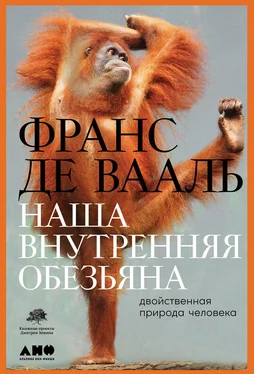


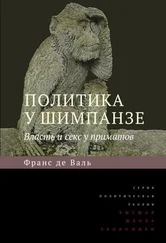


![Франс Вааль - Последнее объятие Мамы [litres]](/books/406055/frans-vaal-poslednee-obyatie-mamy-litres-thumb.webp)
